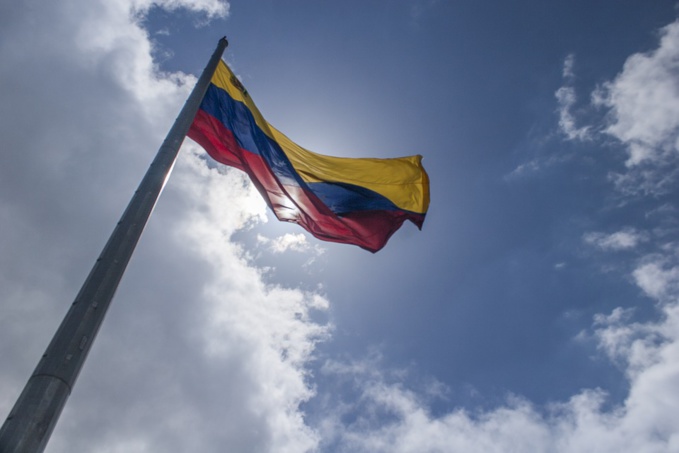The situation in the global economy has made a U turn over the past year. The slowdown in growth, which manifested itself in the final segment of 2018, is expected to continue in the near future. Moreover, in view of the growing uncertainty, the situation in a group of developing countries is characterized as “unsure”. The downward revision of estimates by the IMF affects the largest economies in Latin America, although growth is still expected to recover in the medium term.
The economic growth forecast for the continent in 2019 is 1.4%. This is six tenths of a percent less than the January forecast and is only four tenths of a percent higher than the 2018 figure. For 2020, growth is projected at 2.4%. In this case, it is one tenth percent less than previous estimates, although, as experts point out, this figure will depend on the economic development of Argentina.
In general, the economic growth of developing countries is complicated by a number of factors. First of all, this is an economic decline in these countries. Secondly, the decline in activity in industrialized countries. Third, tougher financial conditions and, in some cases, high debt. And, finally, the cheapening of energy and raw materials.
Let's start with the most developed economy of Latin America. Brazil’s economic growth will consistently grow from 1.1% in 2018 to 2.1% in the current one, that is, it will almost double. But in any case, it will be four tenths of a percent below the forecast made by the IMF just three months ago. By 2020, an increase of 2.5% is expected.
According to IMF experts, the main task for Brazil is to contain the growth of public debt in such a way that the process of strengthening the financial system does not result in cuts in social programs and thus does not affect the least protected segments of the population.
Monetary policy can remain soft in order to support domestic demand, as the inflation rate approaches the target. There are also demands for labor law reform and infrastructure improvements.
In Mexico, there will be a slowdown from 2% last year to 1.6% this year. In relation to the January forecast, this is half a percentage point less. By 2020, there will be a rebound to 1.9%, but the figure will be three-tenths of a percent lower than planned.
The IMF considers it “essential” that the Mexican authorities “do not delay implementation of the necessary structural reforms,” since this could create greater uncertainty and adversely affect investment and creation of new jobs. The IMF also recommends adhering to a plan to strengthen the financial system in the medium term to create confidence. In the area of monetary policy, there is a possibility of lowering interest rates “if necessary”.
The IMF believes that a free trade agreement between the United States, Mexico, and Canada is a step in the right direction, while adding that the agreement reduces tensions caused by trade disputes. However, the fund recalls that the agreement should be adopted by the US Congress, where the Democrats are expressing increasingly more doubts in connection with it.
Argentina is currently a very significant country for Latin America. According to forecasts, its economy will shrink in the first half of 2019 due to lower demand. However, in the second half of the year, its economy will begin to grow again as domestic incomes will increase and agriculture will begin to recover after the last year drought.
According to forecasts, the decline in the Argentine economy will be reflected in a slowdown in economic growth from 2.5% in 2018 to 1.2% in 2019. By 2020, it will reach 2.2%. “Implementation of the stabilization plan is key to increasing investor confidence and restoring sustainable growth in order to improve the quality of life of all sectors of society,” the IMF said.
The black hole of the South-American economy is Venezuela. In 2019, its economy will shrink by 25% and in 2020 will fall by 10%. Last year, it declined by 18%. “The fall is greater than expected,” the IMF indicates. Thus, this country is becoming a burden for the entire continent. Among developing countries, with the exception of Venezuela, the rate of inflation will remain stable.
The topic of Venezuela is invariably present in the report, especially in the part that deals with oil prices. Uncertainty in this matter is quite high due to supply disruptions and social tensions. The tough US policy on the regime of Nicolas Maduro is another factor that could provoke a rise in prices, along with sanctions against Iran and tensions in Libya.
source: elpais.com
The economic growth forecast for the continent in 2019 is 1.4%. This is six tenths of a percent less than the January forecast and is only four tenths of a percent higher than the 2018 figure. For 2020, growth is projected at 2.4%. In this case, it is one tenth percent less than previous estimates, although, as experts point out, this figure will depend on the economic development of Argentina.
In general, the economic growth of developing countries is complicated by a number of factors. First of all, this is an economic decline in these countries. Secondly, the decline in activity in industrialized countries. Third, tougher financial conditions and, in some cases, high debt. And, finally, the cheapening of energy and raw materials.
Let's start with the most developed economy of Latin America. Brazil’s economic growth will consistently grow from 1.1% in 2018 to 2.1% in the current one, that is, it will almost double. But in any case, it will be four tenths of a percent below the forecast made by the IMF just three months ago. By 2020, an increase of 2.5% is expected.
According to IMF experts, the main task for Brazil is to contain the growth of public debt in such a way that the process of strengthening the financial system does not result in cuts in social programs and thus does not affect the least protected segments of the population.
Monetary policy can remain soft in order to support domestic demand, as the inflation rate approaches the target. There are also demands for labor law reform and infrastructure improvements.
In Mexico, there will be a slowdown from 2% last year to 1.6% this year. In relation to the January forecast, this is half a percentage point less. By 2020, there will be a rebound to 1.9%, but the figure will be three-tenths of a percent lower than planned.
The IMF considers it “essential” that the Mexican authorities “do not delay implementation of the necessary structural reforms,” since this could create greater uncertainty and adversely affect investment and creation of new jobs. The IMF also recommends adhering to a plan to strengthen the financial system in the medium term to create confidence. In the area of monetary policy, there is a possibility of lowering interest rates “if necessary”.
The IMF believes that a free trade agreement between the United States, Mexico, and Canada is a step in the right direction, while adding that the agreement reduces tensions caused by trade disputes. However, the fund recalls that the agreement should be adopted by the US Congress, where the Democrats are expressing increasingly more doubts in connection with it.
Argentina is currently a very significant country for Latin America. According to forecasts, its economy will shrink in the first half of 2019 due to lower demand. However, in the second half of the year, its economy will begin to grow again as domestic incomes will increase and agriculture will begin to recover after the last year drought.
According to forecasts, the decline in the Argentine economy will be reflected in a slowdown in economic growth from 2.5% in 2018 to 1.2% in 2019. By 2020, it will reach 2.2%. “Implementation of the stabilization plan is key to increasing investor confidence and restoring sustainable growth in order to improve the quality of life of all sectors of society,” the IMF said.
The black hole of the South-American economy is Venezuela. In 2019, its economy will shrink by 25% and in 2020 will fall by 10%. Last year, it declined by 18%. “The fall is greater than expected,” the IMF indicates. Thus, this country is becoming a burden for the entire continent. Among developing countries, with the exception of Venezuela, the rate of inflation will remain stable.
The topic of Venezuela is invariably present in the report, especially in the part that deals with oil prices. Uncertainty in this matter is quite high due to supply disruptions and social tensions. The tough US policy on the regime of Nicolas Maduro is another factor that could provoke a rise in prices, along with sanctions against Iran and tensions in Libya.
source: elpais.com



















